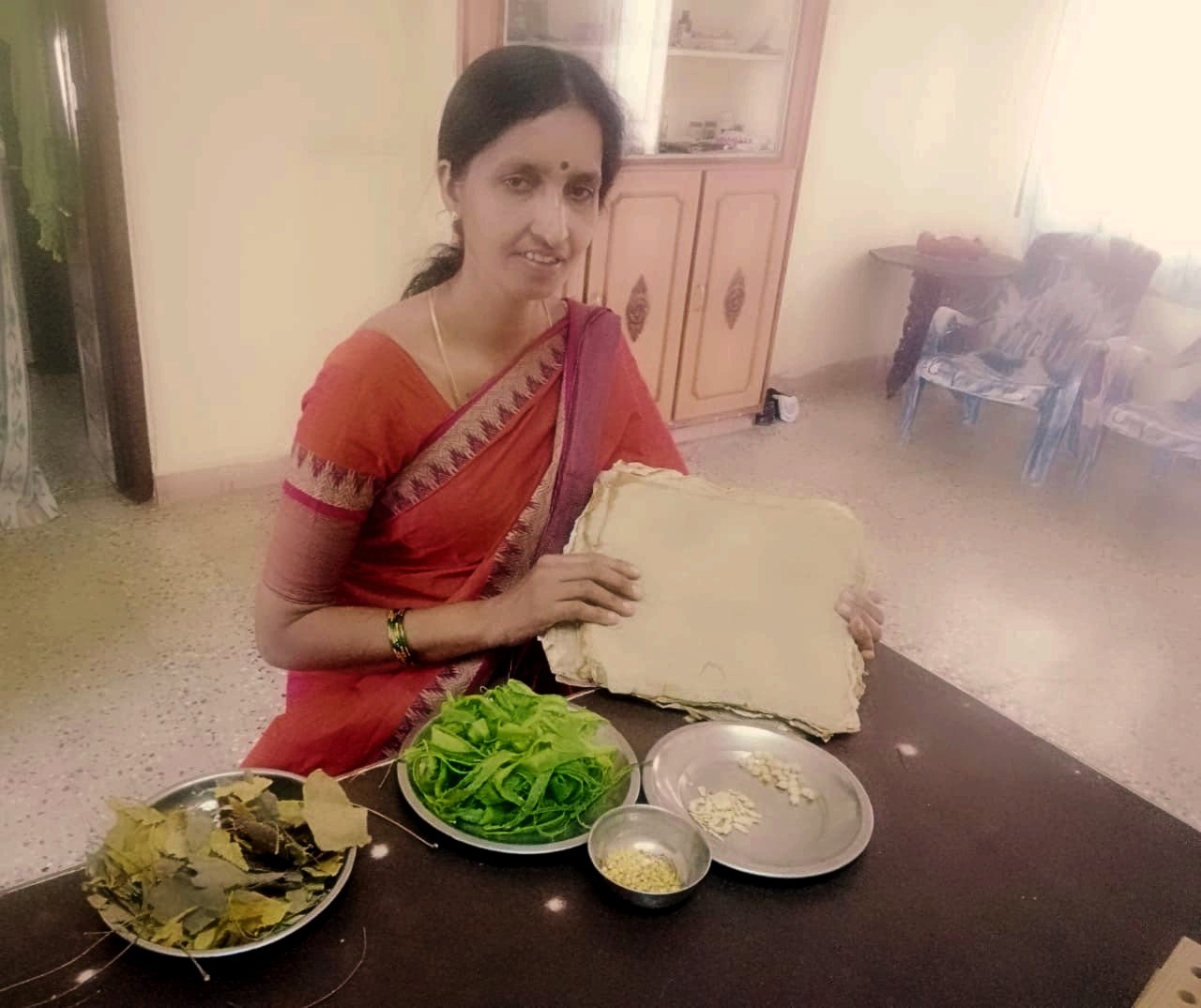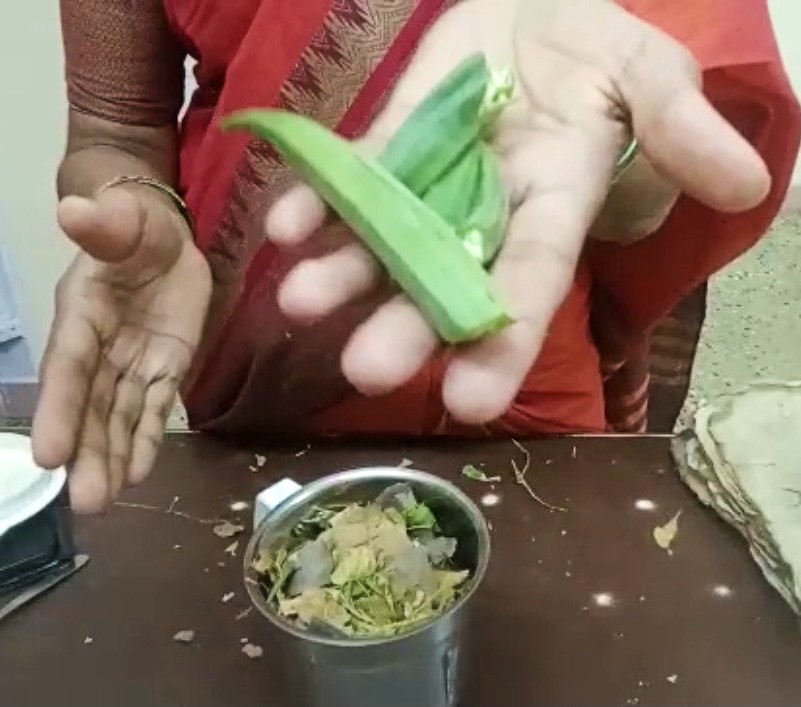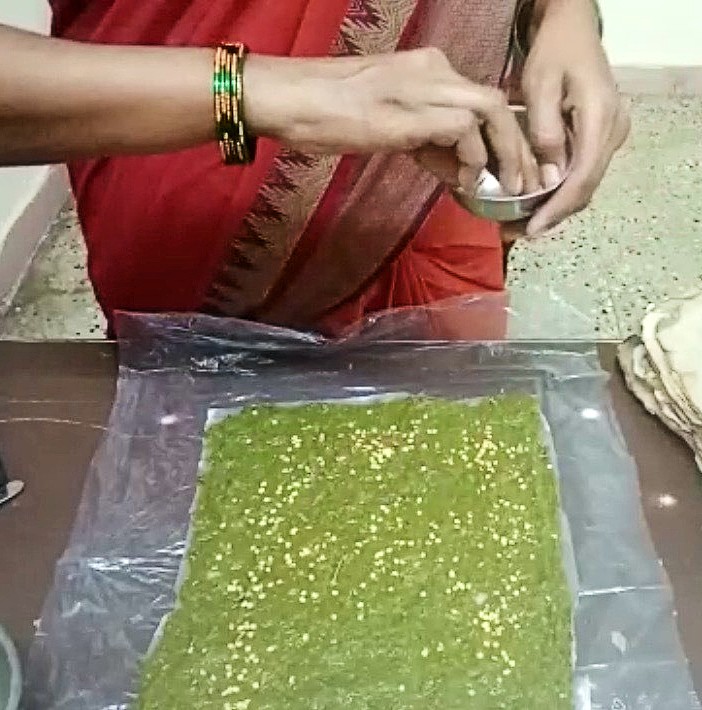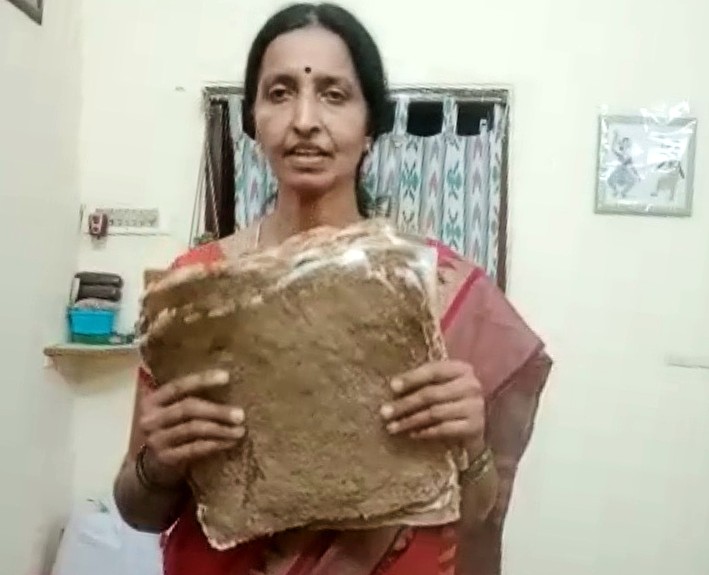To reduce the amount of waste generated, and to reuse whatever possible, several households across the country segregate wet waste to prepare compost. To do so, they collect their food waste in a large bin. However, not everyone has spacious outdoor gardens to set up their compost bin. So they place it in their kitchens. But this can lead to unpleasant smells around the house.
While many try different methods to mask the bad smell, Arunjyoti Lokhanday (50), a resident of Nalgonda, Telangana, has decided to make seed paper napkins out of the wet waste. While these napkins cannot be used like regular paper, they can be torn into bits and potted to grow into plants. Arunjyothi also makes sheets without seeds embedded in them, to use as dried compost.

A creative childhood
Arunjyoti had always been creative and involved with arts and crafts, a habit she had imbibed from her mother during her childhood. “My mother would use an earthen chulha to prepare food. When I was seven years old, she taught me how to make one,” she recalls, adding that even as she grew older, she continued learning arts and crafts such as embroidery and paper mache moulding from those around her.
A graduate of BA Diploma in Costume Designing, Arunjyothi now manages a clothing store with her husband. Apart from that, since 2014, she has been regularly conducting workshops in schools and art galleries, as well as holding free sessions for underprivileged children.
“I use the money collected from paid workshops to sponsor the free ones, which are usually conducted for children living in slums,” says Arunjyothi. She adds that some of her popular workshops include sessions on how to make Ganesha and handmade paper from waste paper.
Seed paper from kitchen waste
“Since 2014, I have been preparing compost from kitchen scraps to add as manure to the plants growing in my garden. The bin was earlier placed in my kitchen, as I could not mitigate the threat of rodents outside my house. However, a few days after the scraps would decompose, they would emit a bad odour, and both my son and husband would complain. So to deal with that, I decided to grind the waste into a pulp, and make paper from it,” Arunjyothi tells The Better India.
While this paper would not be like the regular one, she decided to make sheets out of the wet waste pulp, dry them, and plant them as manure. “In my first attempt, I blended vegetable and fruit peels in the mixer. Once the pulp was smooth, I spread it evenly into a rectangle shape onto a plastic sheet. I placed a thin paper napkin, which usually dissolves when it is in contact with water, to measure the size of my sheet. After a few mins, I peeled it off and allowed this to dry under the sun for two days,” says Arunjyothi.
However, she found that her first attempt had failed. The wet waste became too dry under the sun, and crumbled into powder when Arunjyothi tried to peel it off the plastic sheet. So, to add a sticky agent to the pulp, she blended okra tips, which are generally discarded while cooking. This provided the necessary stickiness, and in her second attempt, the paper was a success.
“The sheets of paper were the size of a handkerchief, and I would cut three or four bits from one sheet and add it every day to my plants,” says Arunjyothi.
To take this a step further, she added seeds — of plants including tomato, brinjal, and spinach from a local nursery — on the wet sheet before placing it on the terrace to dry. “The first few sheets were presented as gifts to friends and family. I have planted a few sheets in my own garden as well, and they grew into tulsi and tomato plants,” says Arunjyothi.
Her creative solution was also appreciated by the Telangana State Innovation Cell.
Here’s how you can make seed paper napkins at home yourself:
Step 1: Collect fruit and vegetable waste over two days and store them in the refrigerator.
Step 2: Collect okra stem tips to add stickiness to the pulp. Pro tip: You can even add a few neem leaves to the mix, and this will act as a natural pesticide to keep insects from attacking the seeds.

Step 3: Add some water and blend the scraps until they form a smooth pulp.
Step 4: Cut open a plastic bag to act as a base to mould the paper. You can even draw lines to mould the perfect shape.

Step 5: Spread the pulp over the plastic sheet, and sprinkle up to 12 seeds.

Step 6: Wait for a few mins for the pulp to settle and slowly remove it from the plastic. Allow it to dry on the terrace.
Step 7: Once the upper surface is hard, slowly peel it off and overturn. Again, leave it under the sun for two days for the other side to dry.

Step 8: Cut it up into desired sizes and plant it whenever necessary.
No comments:
Post a Comment